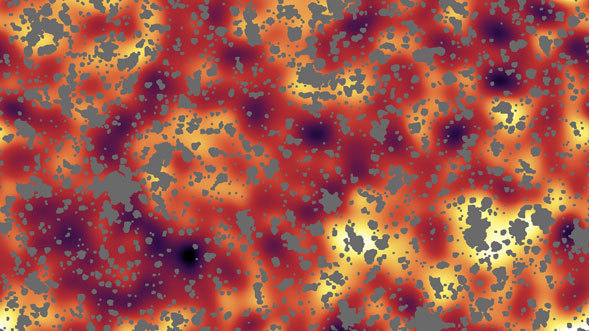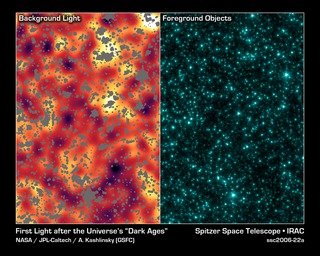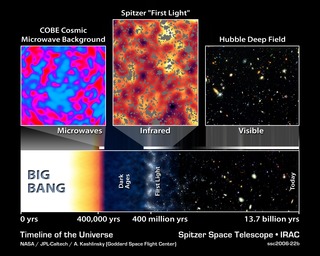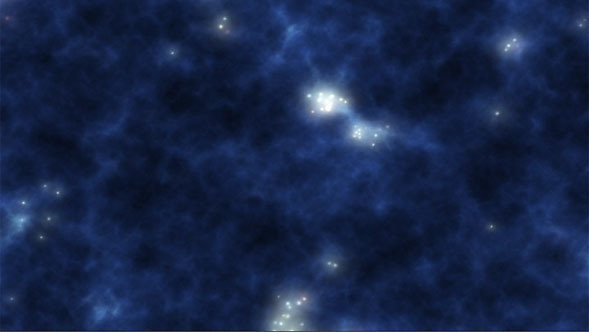Stars Spring Up Out of the Darkness
Science Animations Video • December 18th, 2006 • ssc2006-22v1
This artist's animation illustrates the universe's early years, from its explosive formation to its dark ages to its first stars and mini-galaxies.
Scientists using NASA's Spitzer Space Telescope found patches of infrared light splattered across the sky that might be the collective glow of clumps of the universe's first objects. Astronomers do not know if these first objects were stars or "quasars," which are black holes voraciously consuming surrounding gas.
The movie begins with a flash of color that represents the birth of the universe, an explosion called the Big Bang that occurred about 13.7 billion years ago. A period of darkness ensues, where gas begins to clump together.
The universe's first stars are then shown springing up out of the gas clumps, flooding the universe with light, an event that probably happened about a few hundred million years after the Big Bang. Though these first stars formed out of gas alone, their deaths seeded the universe with the dusty heavy chemical elements that helped create future generations of stars.
The first stars, called Population III stars (our star is a Population I star), were much bigger and brighter than any in our nearby universe, with masses about 1,000 times that of our sun. They grouped together into mini-galaxies, which then merged to form galaxies like our own mature Milky Way galaxy.
The first quasars, not shown here, ultimately became the centers of powerful galaxies that are more common in the distant universe.
Video Credit: NASA/JPL-Caltech/R. Hurt (SSC)







